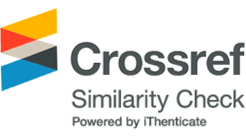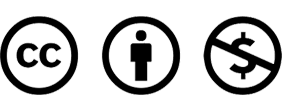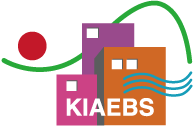Research Article
Borgstein, E., Lamberts, R., Hensen, J. (2016). Evaluating energy performance in non-domestic buildings: A review. Energy and Buildings, 128, 734-755.
10.1016/j.enbuild.2016.07.018Byun, J.Y., Park, S.H., Shim, J.S., Song, D.S. (2023). Analysis of Heat Flow Characteristics Through a South-facing Wall Directly Exposed to Solar Radiation and Convergence Condition for Thermal Transmittance Calculation. Korean Journal of Air-Conditioning and Refrigeration Engineering, 35(3), 126-135.
10.6110/KJACR.2023.35.3.126Choi, M.S., Chang, S.J. (2013). Comparative analysis on the heating and cooling loads associated with U-value, SHGC and Orientation of the windows in different regions. KIEAE Journal, 13(2), 123-130.
10.12813/kieae.2013.13.2.123Chung, W. (2011). Review of building energy-use performance benchmarking methodologies. Applied Energy, 88(5), 1470-1479.
10.1016/j.apenergy.2010.11.022Ding, Y., Liu, X. (2020). A comparative analysis of data-driven methods in building energy benchmarking. Energy and Buildings, 209, 109711.
10.1016/j.enbuild.2019.109711Jang S.M., Park, B.Y., Lee, T.I., Choi, Y., Cho, J.K. (2022). Analysis of the Renewable Energy Application and Energy Consumption Structure in the Educational Facilities through a Complete Enumeration Survey. Korean Journal of Air-Conditioning and Refrigeration Engineering, 34(11), 512-522.
10.6110/KJACR.2022.34.11.512Jeong, J.H., Chae, Y.T. (2022). Assessment of Input Variable Importance and Machine Learning Model Selection for Improving Short Term Load Forecasting on Different Building Types. Journal of KIAEBS, 11(6), 586-598.
Kim, D.-W., Ahn, K.-U., Shin, H., Lee, S.-E. (2022). Simplified weather-related building energy disaggregation and change-point regression: Heating and cooling energy use perspective. Buildings, 12(10), 1717.
10.3390/buildings12101717Kim, D.W., Kim, Y.M., Lee, S.E. (2019). Development of an energy benchmarking database based on cost-effective energy performance indicators: Case study on public buildings in South Korea. Energy and Buildings, 191, 104-116.
10.1016/j.enbuild.2019.03.009Kim, H.J., Shin, J.K., Seo, D.H. (2023b). Development of Residential Building Energy Benchmark Data. Journal of KIAEBS, 17(6), 482-496.
Kim, S.H., Kim, B.J., Lim, H.S., Yu, K.H., Jeong, J.W. (2023a). An analysis of optimal data resolution on Change Point Model for public open data based building energy consumption diagnosis. Journal of KIAEBS, 17(6), 411-421.
Lee, J.H., Hyun, I.T., Yoon, Y.B., Lee, K.H., Chin, K.I. (2014). Analysis of Energy Consumption Characteristics of Education Facilities in Korea. KIEAE Journal, 14(5), 59-65.
10.12813/kieae.2014.14.5.059Nikolaou, T., Kolokotsa, D., Stavrakakis, G. (2011). Review on methodologies for energy benchmarking, rating and classification of buildings. Advances in Building Energy Research, 5(1), 53-70.
10.1080/17512549.2011.582340Olu-Ajayi, R., Alaka, H., Sulaimon, I., Sunmola, F., Ajayi, S. (2022). Building energy consumption prediction for residential buildings using deep learning and other machine learning techniques. Journal of Building Engineering, 45, 103406.
10.1016/j.jobe.2021.103406Truong, L.H.M., Chow, K.H.K., Luevisadpaibul, R., Thirunavukkarasu, G.S., Seyedmahmoudian, M., Horan, B., Mekhilef, S., Stojcevski, A. (2021). Accurate prediction of hourly energy consumption in a residential building based on the occupancy rate using machine learning approaches. Applied Sciences, 11(5), 2229.
10.3390/app11052229Yun, W.C., Sohn, Y.H. (2011). The Economics of GHP and EHP and the Countermeasures to Alleviate Winter Electricity Peaks. Environmental and Resource Economics Review, 20(2), 381-400.
Zhu, L., Zhang, J., Gao, Y., Tian, W., Yan, Z., Ye, Z., Sun, Y., Wu, C. (2022). Uncertainty and sensitivity analysis of cooling and heating loads for building energy planning. Journal of Building Engineering, 45.
10.1016/j.jobe.2021.103440Lundberg, S.M., Erion, G.G., Lee, S.-I. (2018). Consistent individualized feature attribution for tree ensembles. arXiv preprint, arXiv:1802.03888.
Segal, M.R. (2004). Machine learning benchmarks and random forest regression. UCSF, Center for Bioinformatics and Molecular Biostatistics, 1-15.
Jeun, W.S., Hwang, J.H., Suh, D.J. (2022). GIS-based Prediction of Electricity Consumption for Apartment Complex by Using Machine Learning. Journal of KICS Winter Conference 2022, 1407-1408.
Lee, S.H., Park, H.S. (2016). A Field Survey of GHP and Study for Maintenance Method of school Building. Society of Air-conditioning and refrigerating engineers of Korea Summer Conference 2016, 122-125.
Parasonis, J., Keizikas, A. (2010). Possibilities to reduce the energy demand for multistory residential buildings. Modern Building Materials, Structures and Techniques. Proceedings of the International Conference, Vilnius Gediminas Technical University, Department of Construction Economics, 989-993.
EnergyStar. (2018). EnergyStar Portfolio Manager Technical Reference: Energy Star Score for K-12 Schools in the United States.
Shin, G.J., Park, H.R. (2023). Development of a Standardized Model for Carbon Reduction in Schools: Research Report. Seoul Education Research & information Institute, 44. 127-128.
Mims, N., Schiller, S., Stuart, E., Schwartz, L., Kramer, C., Faesy, R. (2017). Evaluation of US building energy benchmarking and transparency programs: Attributes, impacts, and best practices. Lawrence Berkeley National Laboratory, LBL publications, 60-62.
10.2172/1393621Yoon, J.H. (2018). Energy consumption pattern classification in university buildings using Change Point Model. PhD Thesis, Seoul National University graduate schools.
Schoolinfo. (2024). Ministry of Education, Korea, Available at: https://www.schoolinfo.go.kr [Accessed on 20/12/2024].
- Publisher :Korean Institute of Architectural Sustainable Environment and Building Systems
- Publisher(Ko) :한국건축친환경설비학회
- Journal Title :Journal of Korean Institute of Architectural Sustainable Environment and Building Systems
- Journal Title(Ko) :한국건축친환경설비학회논문집
- Volume : 18
- No :6
- Pages :491-501
- Received Date : 2024-10-16
- Revised Date : 2024-11-01
- Accepted Date : 2024-11-15
- DOI :https://doi.org/10.22696/jkiaebs.20240041
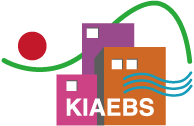



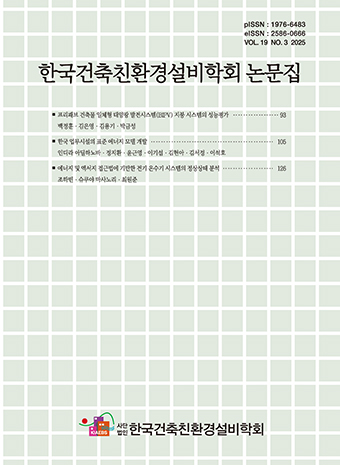 Journal of Korean Institute of Architectural Sustainable Environment and Building Systems
Journal of Korean Institute of Architectural Sustainable Environment and Building Systems




